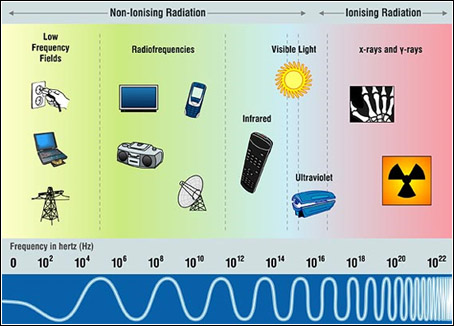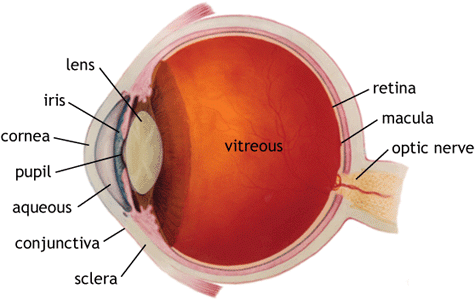Light is made up from different wavelengths. The visible spectrum of colours is the part of light we can see whilst other waves of light such as Ultraviolet we cannot. In producing effective safety glasses it is important to understand the differences and the dangers posed by the various forms of light.
Wavelengths
Although there are many wavelengths of energy we are only concerned with the parts that form sunlight and artificial light. These are Ultraviolet, Infrared and the visible spectrum. Humans can only detect wavelengths of between 380 and 780 nanometers which reflects off certain surfaces differently producing the visible spectrum of colours.
As the wavelength of light becomes shorter is retains more energy and can be damaging. Ultraviolet light for example has a slightly shorter wavelength than our visible spectrum and carries more energy. Everyone knows it can cause sunburn which is exactly what it can do to you eyes. Exposure to invisible UV rays will build up and eventually lead to worsening eyesight.
Click the image below to enlarge the diagram that shows how only 30% of sunlight is visible to us and how the invisible spectrum can cause varying damage to the eye. For anyone working outside regularly it is important that they protect against this continually.
Generally it is known that both UV and Infrared wavelengths can damage human eyes but it is less well known that certain parts of the visible spectrum can do the same. Blue light is the main example which has the smallest wavelength of the whole spectrum and therefore carries the most energy. Prolonged exposure to Blue light can lead to partial blindness and so special ESP lenses have been developed to filter out this part of the spectrum.
The different parts of the eye
Although technically there is no need for someone buying a pair of safety glasses to understand how the eye works, we thought it would at least be interested to explain the various parts of the eye and explain what they are used for.
- The cornea: The front transparent part of the eye, protective envelope of the sclera or the white of the eye.
- The iris: Rear part of the choroid, rich in colouring materials and blood vessels. This is the eye nourishing tissue. It contracts or expands depending on the light intensity.
- The pupil: opening at the centre of the Iris, the diameter of which increases or reduces depending on the light intensity.
- The retina: Nervous membrane at the back of the eye. The retina captures light rays and sends them to the brain through the optic nerve.
- The lens: Bi-convex transparent lens about 9 mm diameter. It is composed of flexible fibres laid out in layers, and forces light rays to converge onto the retina to give focused vision.




